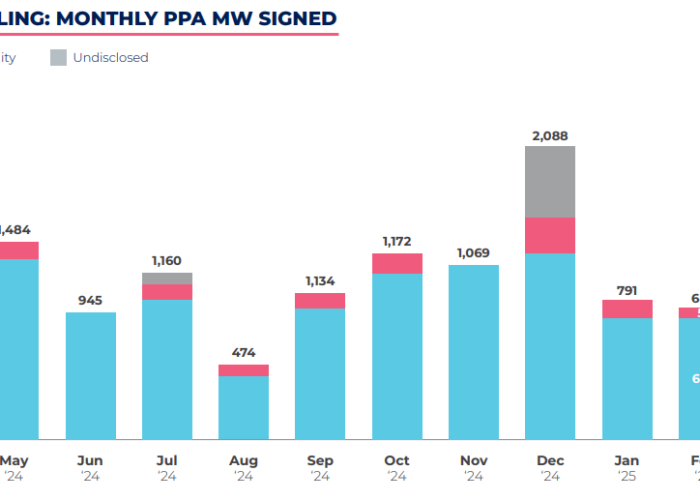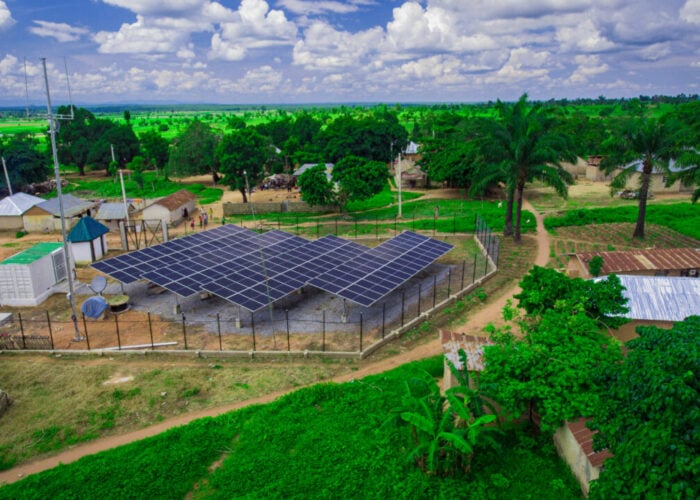
European solar investors are coming to terms with smaller returns, however banks, governments and grid operators could do more to help alleviate risk and ease investor concerns.
In a panel discussion centred around solar’s role in Europe’s economic recovery during this week’s Large Scale Solar Europe conference, hosted by PV Tech publisher Solar Media, solar investors and consultants revealed that forecasted internal rates of return (IRRs) from large-scale solar projects had tumbled in Europe.
Unlock unlimited access for 12 whole months of distinctive global analysis
Photovoltaics International is now included.
- Regular insight and analysis of the industry’s biggest developments
- In-depth interviews with the industry’s leading figures
- Unlimited digital access to the PV Tech Power journal catalogue
- Unlimited digital access to the Photovoltaics International journal catalogue
- Access to more than 1,000 technical papers
- Discounts on Solar Media’s portfolio of events, in-person and virtual
Or continue reading this article for free
João Cunha, COO and deputy CEO at renewables investor Smartenergy, said that while his company would need a double-digit rate of IRR to consider a green hydrogen project, utility-scale solar PV had become increasingly competitive, with returns around the 5 – 6% mark far more common.
His view was endorsed by Ignacio Cobo, senior consultant at consulting firm AFRY, who said that the solar industry was “no longer talking about double-digit targeted returns”, agreeing with Cunha’s forecast for IRRs of between 5 – 6%, with returns sometimes slipping closer to 4%, as has been seen in recent European renewables auctions like those seen in Spain and Portugal.
Portugal’s most recent solar auction, held last summer, was notable for setting a new record low price for solar at auction. Enerland submitted a bid of US$0.0131/kWh for a 10MW lot in the auction, beating the previous auction record of US$0.0135/kWh set by a consortium including JinkoSolar and EDF for Abu Dhabi’s Al Dhafra project last spring.
These more modest returns were, however, failing to whet the appetite of some investors, despite a “tsunami of green capital” flooding into markets, as discussion moderator and BloombergNEF’s head of solar analysis Jenny Chase, posed it to the panel.
Cobo said the contraction of returns had placed greater emphasis on education throughout the value chain, especially for banks and risk committees to make them more comfortable with risks associated with solar projects as projected returns diminished. Other means of reducing that risk would be via more regulator auctions, which guarantee a purchase price for power over a contracted period, while hybridisation with other generation technologies or energy storage facilities could also be a means of reducing market volatility.
Stefan Müller, co-founder at multi-faceted solar company Enerparc, said that the solar industry no longer needs any overt means of funding such as subsidies to attract investors, but governments could go a long way to easing investor concerns by offering bank guarantees, while grid operators could also serve a purpose by becoming offtakers. Such a move could be a “real push for the market”, Müller said.
Attendees for the discussion would also appear to have agreed. In a poll, more than half – 56% – said improved policy stability would be the best way for governments to support utility-scale solar moving forward.
Large Scale Solar Europe 2021 continues this week, with a range of sessions unpicking topics key to Europe’s flourishing solar market. For more details on the event, click here.







